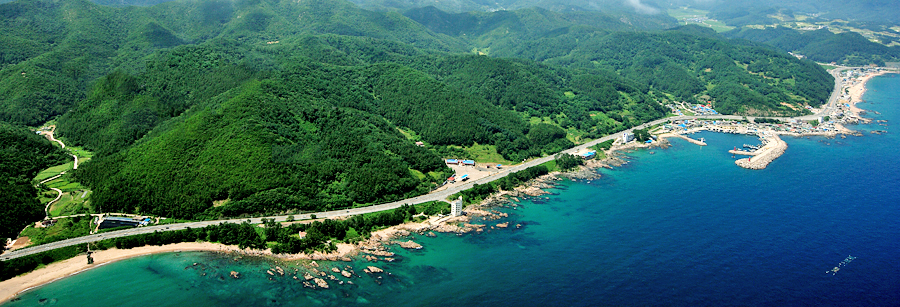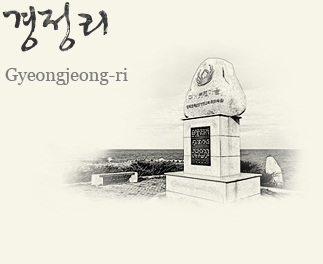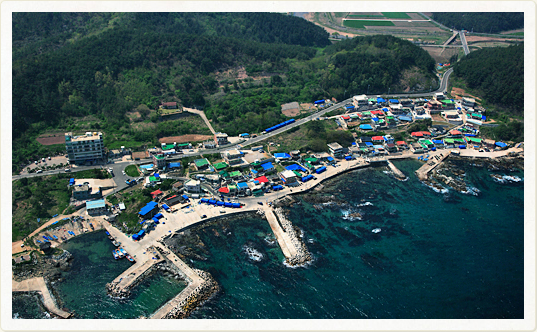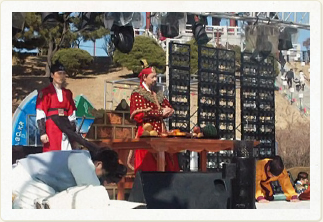

 > BlueRoad Story >
Story of Villages on BlueRoad
> BlueRoad Story >
Story of Villages on BlueRoad
Select each category and see the origin of villages in detail.


Originally, it was a part of Nam-myeon, Yeonghae-bu, and called 'Baetbul' or 'Gyeongjeong'.
The name of Gyeongjeongpo is found in 'Gyeongsang-do Jiriji' published in 1425, Gyeongjeong-ri is indicated as 'Chayujingyeong Yukri' and 'Gyeonjeongjin-ri' in the Population Census published in 1789.
Ome-dong and Gyeongjeong-dong, the part of Chayu-dong, were incorporated and renamed to Gyeongjeong-dong and became part of Chuksan-myeon under the administrative district rearrangement in 1914.
In 1945, Gyeongjeong-dong was divided into Gyeongjeong 1-dong, and Chayu was divided into Gyeongjeong 2-dong.
Gigyeong/Ome were divided into Gyeongjeong 3-dong.
In 1988, it became 'ri', instead of 'dong', the administrative unit.

• The Byeongsan Battle in Andong(AD 929) was the desperate battle that had the fate of Goryeo Dynasty -- which unified the later three states and established Goryeo Dynasty -- at stake. Through this 2-month long battle, Wang Geon ascended to the position of leader who unified the later three states. In this battle, the residents of North Gyeongsangbuk-do made concerted efforts and helped Wang Geon win the war. Particularly, the residents of Yeongdeok played decisive role in the triumph of Wang Geon in the war. For that reason, King Taejo Wang Geon stopped at Yeonghae and Yeongdeok on his ceremonial walk to Gyeongju in 931, one year after the war ended, to give great comfort to the residents of Yeonghae and Yeongdeok.
• At this time, the residents presented the snow crab as special food to King Taejo Wang Geon when he made a tour of Yeonghae region and arrived at the original Snow Crab Village located at Gyeongjeong 2-ri, Chuksan-myeon. King Taejo Wang Geon praised the excellent taste of Yeongdeok snow crab, and since this moment, Yeongdeok snow crab has become famous to date.
• In addition, King Taejo Wang Geon, who made a tour of Yeonghae region, called the village "Yeju" in recognition of the villagers' politeness and beautiful custom of being nice to one another. Since then, Yeonghae has been called "Yeju". At this time, the fact that King Taejo Wang Geon passed through Yeonghae, Jabuteojae, Yeongdeok and Ganggu Samsa is recorded in "Yeonghae Dohobu" of "Sinjeung-dongguk-yeoji-seungram(Newly Revised Augmented Survey of the Geography of the Eastern Kingdom)" which was published in 1530.
Please refrain from inquiring about food and accommodation